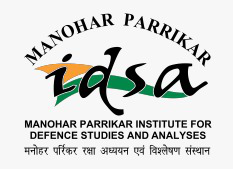Small Modular Reactors and India: Institutional Drivers and Challenges
Given India’s future energy demand and need for clean energy, Small Modular Reactors (SMR) are a suitable option.
Given India’s future energy demand and need for clean energy, Small Modular Reactors (SMR) are a suitable option.
Pakistan no longer gains a substantial strategic advantage from its nuclear posturing, even as it continues to view the display of a nuclear threat as a strategic tool in conflict scenarios.
The Israel–Iran War has raised serious questions regarding the credibility of the IAEA and highlighted structural deficiencies in the NPT.
The article aims to analyse the developments and challenges in the India– US defence cooperation in the face of the ongoing decay of the nuclear order. While the defence cooperation has grown manifold, it is pertinent to understand the pathways in which India and the US can cooperate towards building a stable nuclear order. The effort should be to minimise the risk of any accidental nuclear war in the wake of heightened tensions and heated conventional warfare in the current geopolitical landscape, incorporating missile forces, weapons of mass destruction, tactical nuclear weapons, and others. The article begins with an outline of the India–US defence cooperation followed by an understanding of the Indian stance on disarmament and nuclear treaties; the evolution of the India–US nuclear cooperation; an overview of the changing global nuclear order and its impact on the conventional warfare; the perceptions of India and the US on nuclear stability; prospects and challenges in defence cooperation against threats to nuclear stability; and the way forward to cooperate on building deterrence and nuclear stability.
Despite President Trump’s desire to improve relations with the Kim regime and denuclearise North Korea, the relationship between Washington and Pyongyang remains strained.
India needs to accelerate the development of emerging technologies and integrate them with the weapon systems deployed on the ground in the light of the Chinese challenge.
The qualitative and quantitative advances in the Chinese nuclear arsenal are creating a huge gap between Indian and Chinese nuclear numbers.
The US, UK and Australia agreement for cooperation in Naval Nuclear Propulsion (NNP) presents a viable legal framework under which NNP technology can be transferred to Australia.
With the last surviving arms control treaty, the 2010 New START, under suspension with no sign of a successor treaty, the post-Cold War nuclear order is under stress.



